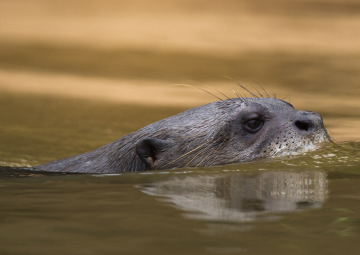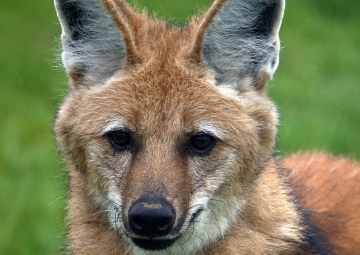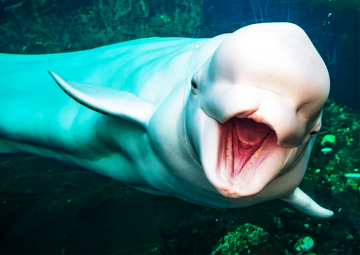THEORY
How to Solve Behavioral Problems

As trainers or caregivers, we often encounter situations with our animals in our daily routines that present behavioral problems, and we may not always know how to solve them, or rather, how to begin developing a plan to improve or resolve them as soon as possible.
When our animal starts to exhibit unusual or problematic behaviors, it can be frustrating and worrying. Some may be more or less significant; however, effectively addressing these issues requires a systematic, flexible, and persevering approach. Here at Wezooit, we want to present you with some practical steps to help you solve these problems.
-
Identifying the Problem
The first step is to recognize that there is a problem and clearly define the behavior we want to modify. Observe your animal carefully and note exactly what it does and when it does it. The more information you have, the better you can understand the problem. For example, one of our belugas displays aggression towards visitors in the gallery of our facility.

-
Discovering the Underlying Causes
Once the problematic behavior is identified, it is important to investigate what may be causing it. At first glance, you may not know why. Sometimes, there may even be medical reasons; other times, it may be behavioral, so consult with a veterinarian to rule out any health problems. Also, study your animal's environment, its history, and any recent changes that may be causing this behavior. Going back to the previous example, what is causing these displays of aggression? Is it the audience? What if it's deferred aggression due to an unfavorable social situation? What if it's due to physical discomfort or overprotection of its offspring?

-
Creating an Action Plan
Based on what you have observed and discovered, develop an action plan to address the problem. This could include: changing its routine, providing more sessions, attention, and/or mental stimulation, reducing visitor access to the gallery, or working on specific training techniques, having a trainer or educator in the installation's glass area who, through good communication, helps you know when is the exact moment when the animal is not performing those displays of aggression and reinforcing it at those moments, etc. Sometimes, it is not necessary to make big changes but to slightly modify some circumstances or situations in its environment that may redirect its attention or reinforce a different behavior than the one we consider problematic. You can delve a little deeper into this technique, known as differential reinforcement, in our articles "What Leads an Animal to Perform a Behavior?" or in "Aggression: Exploring Causes and Possible Reduction Techniques."
-
Implement the Plan
Once you have a plan, it is time to put it into practice. It is essential to be patient, consistent, and not lose sight of the ultimate goal, which is to reduce or eliminate the unwanted behavior. Remember that you must be flexible and not cling to a single plan tooth and nail. If your plan is to reinforce the beluga every time it does not interact in that way with the public, you will have to ensure that the team knows the plan and how to carry it out and have staff availability.
-
Evaluate and Adjust Your Plan
As you work on the problem, keep an eye on how your animal responds. If something is not working, do not be afraid to adjust or change your plan. Sometimes, it may be necessary to try different strategies and/or seek help from other fellow trainers who may have previously faced the same or similar problem you need to solve. It may not be the same problem, you may not speak the same language, or you may not even talk about the same species, but you can always find a common idea or point.
If you do not have staff or any resources available, then you will have to adapt the plan. For example, you may have to avoid or regulate customer access to the glass area or the animal's access to that installation next to the gallery. And even if you cannot avoid both options, perhaps you can hold sessions in the glass area where the animal can be reinforced by interacting with the trainer, while at the same time, visitors can see the animals in the underwater gallery.

-
Maintain and Prevent
Once you have addressed the behavioral problem, it is important to maintain the strategies you have used to prevent a relapse or regression. Continue to provide a stimulating environment and ensure that your animal is receiving enough stimulation and attention. Sometimes, regression is completely normal, and you may have to take a few steps back to correct the situation again, so make sure you have recorded the steps you took to solve the problem.
At Wezooit, we believe that solving behavioral problems in your animal may take time and effort, but with patience and the right approach, good results can be achieved. Do not forget to identify the problem, find the causes, create an action plan, put it into practice, adjust as necessary, and continue working on prevention.
And remember, if it's possible... Wezooit!


















